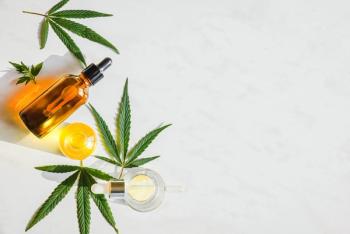
Chemical Compound Causing Cannabis Odor Complaints Identified
Researchers from Byers Scientific, Iowa State University, and Texas-based odor experts identified the odor of cannabis.
A research team comprised of Byers Scientific, Iowa State University (Ames, Iowa), and Texas-based odor experts recently reported the isolation and identification of a volatile chemical that might be the cause for the downwind skunky-like environmental odor complaints that have commonly plagued commercial cannabis and industrial hemp growing operations (1).
Through the use of a triangulation approach of analytical chemistry (such as solid phase microextraction [SPME] fiber, gas chromatography-mass spectrometry [GC–MS], and GC-olfactometry analysis), a leaf enclosure study, and field observation, researchers were able to isolate, identify, measure, and figure out that the compound 3-methyl-2-butene-1-thiol (321 MBT) is the primary source of the cannabis odor. The compound is also the same odorous chemical previously reported to carry the responsibility for the skunky-like aroma and flavor defect in light-struck beer.
This odor of cannabis has often been tied to terpenes. The newly reported discovery of the link between “skunky”cannabis and 321 MBT supports the assumption of a sulfur component within the chemical profile of the cannabis plant emission. In hindsight, the newfound link between “skunky” beer and cannabis should not be all that surprising because the “skunky” beer odor originates from hops, which are in the same plant family (Cannabaceae) as cannabis and hemp. Prior odorant efforts by the researchers has shown MBT to represent an odor impact priority for actual skunk oil, as extracted from the skunk musk gland. In previous investigations, MBT was adjudged as second in odor impact priority, second only to E-2-butene-1-thiol.
Even with the fascinating news of identifying the compound of cannabis’s odor, the researchers still urge for caution as this is only the first critical step in fully researching the issue. Leaf enclosure studies have disclosed other thiols present in the plant emissions, other compounds in the plant’s gas-phase emissions, and that atmospheric reactions may significantly affect the perception and measurement of 321 MBT. There are further research efforts underway to dig deeper into the evaluation of the odor and the most appropriate manner of mitigation.
Reference
Newsletter
Unlock the latest breakthroughs in cannabis science—subscribe now to get expert insights, research, and industry updates delivered to your inbox.




